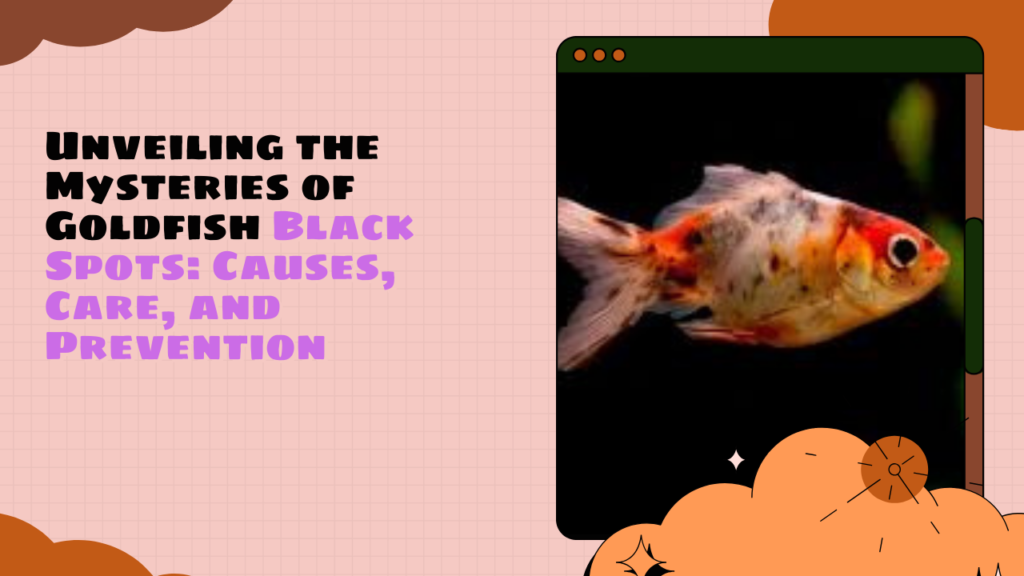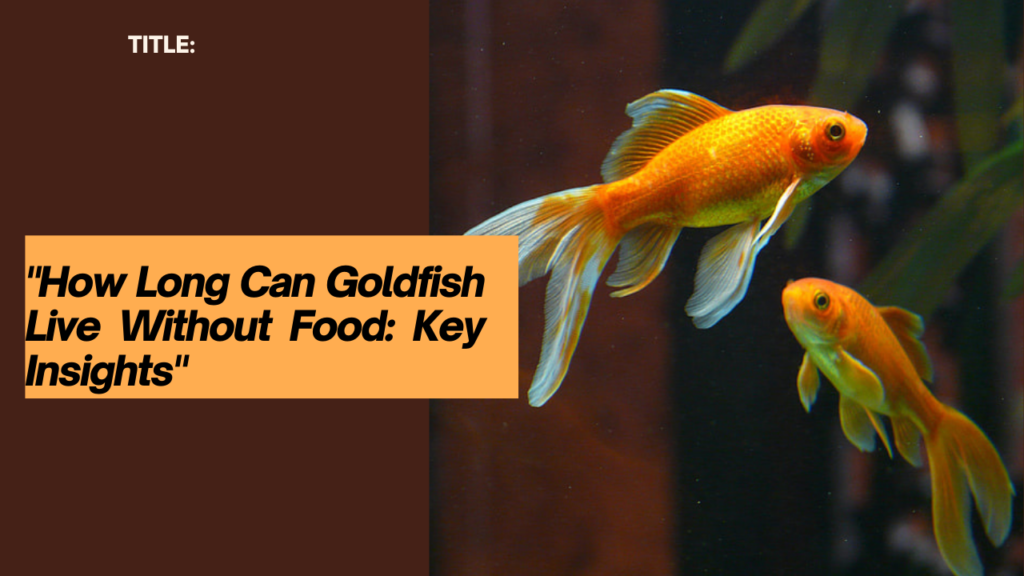Do Goldfish have teeth? You might not have considered it when viewing these aquatic animals in your aquarium at home.
Although goldfish have teeth, they differ significantly from human teeth. Pharyngeal teeth and small, comb-like structures can be found in the throats of goldfish. These teeth have a specific function and are not visible from the outside.
We’ll delve into the intriguing world of goldfish teeth and oral health as we examine their dental architecture.
Goldfish have teeth, but they are primarily used for grinding and chewing rather than biting food. Thus, goldfish usually do not bite their owners or other fish when handled
So let’s quench your curiosity and embark on this informative journey into your friends’ oral secrets.
Table of Contents
- III. Do Goldfish Have Teeth: A Closer Look at Nature’s Toothless Marvels
- Pharyngeal Teeth: Nature’s Hidden Grinders
- Contrasting Goldfish Teeth with Human Teeth
- IV. Goldfish Oral Health
- Do All Goldfish Have Teeth?
- VI. Goldfish Diet and Dental Health
III. Do Goldfish Have Teeth: A Closer Look at Nature’s Toothless Marvels
- Exploring the Unique Dental Structure of Goldfish
Goldfish are identified via a set of pharyngeal teeth termed popularly as “throat teeth.” These interesting structures differ from the dental configuration found in most mammals in that they are situated in the back of the fish’s neck. But what precisely distinguishes these pharyngeal teeth from others?
Pharyngeal Teeth: Nature’s Hidden Grinders

Imagine a bunch of tiny, comb-like structures hidden away in the goldfish’s throat. These teeth, known as the pharyngeal teeth, are crucial to the goldfish’s nutrition. Unlike human teeth, which may be used for biting, cutting, and grinding, goldfish teeth are only used for one purpose: breaking down food into digestible pieces.
Contrasting Goldfish Teeth with Human Teeth
Drawing a clear line between goldfish teeth and our more familiar human teeth is required to comprehend the creativeness of their dental architecture.
anatomy of goldfish teeth
person’s composition is:
Enamel, dentin, and pulp comprise nearly all of human teeth. Enamel serves as a protective outer layer and covers what is visible in the tooth. The pharyngeal teeth of goldfish have no enamel or dentin. Instead, they are made of tissue that mimics bone and are more suited for crushing and grinding than cutting.
Purpose:
Between cutting food with incisors and crushing it with molars, human teeth conduct a variety of jobs. whereas the primary application made by a goldfish’s teeth is for grinding food in the throat.
IV. Goldfish Oral Health
Do Goldfish Have Teeth?
Goldfish need proper treatment, just like any other pet, which includes attention to their oral health. Several issues might arise if your Goldfish’s oral health is neglected. Here, we stress the need to preserve dental wellness in Goldfish, go through various issues that can occur from neglect, and provide helpful advice on enhancing oral hygiene.
The following are some recommendations for promoting oral hygiene: 1. Provide your goldfish with a diet that is well-balanced and consists of superior pellets, flakes, and occasionally treats like live or frozen meals. The process helps with the teeth’s natural tooth wear-down.
- Avoid Overfeeding: Overfeeding may end up in a great deal of food debris in the mouth, which encourages the growth of germs and cavities. To avoid this, feed your goldfish in regulated doses.
- Maintain Water Quality: To guarantee the purity of the water, regularly clean and maintain your goldfish tank. Oral health issues might be compounded by water that is contaminated.
- Regular Checkups: Consult a fish-friendly veterinarian if you notice any dental issues, such as problems eating or odd behavior. They can swiftly determine and resolve any problems.
Do All Goldfish Have Teeth?
Can Goldfish have teeth, right?
While it’s frequently believed that all goldfish have teeth, there are differences across species. The carp family contains goldfish, although not every species has teeth.
Species of goldfish and their dental characteristics are listed below:
The common goldfish (Carassius auratus) typically, this species’ neck contains tiny, bristle-like teeth. These teeth assist in food breaking down and digestion.
Comet goldfish: These fish have teeth as Common goldfish do.
Fantail Goldfish: These fish have teeth developed for their omnivorous diet, enabling them to eat tiny invertebrates and plant items.
Oranda Goldfish: These types of fish have teeth that are compatible with what they eat and may covOranda Goldfish: These fish have teeth that are appropriate for their diet, which includes both plant materials and small organisms. both small living things and plant materials.
. Bubble-Eye Goldfish: These rare goldfish have teeth in addition, which allow them to break up their food.

##Evolutionary benefits of goldfish teeth include:
Having teeth offers several evolutionary advantages for certain goldfish species. Teeth help them effectively process a varied diet, including plant material and tiny organisms. This dietary flexibility can be advantageous for goldfish in the wild, where food sources may vary seasonally. Teeth also aid in breaking down food, increasing the efficiency of digestion.
In summary, not all goldfish species have teeth, but many do, with dental characteristics adapted to their specific diets. The presence of teeth provides evolutionary advantages, allowing these species to efficiently process a wide range of foods in their natural habitats.
VI. Goldfish Diet and Dental Health
- Investigate the correlation between goldfish diet and dental health.
- Offer insights into the ideal diet to support dental well-being.
Goldfish Diet and Dental Health: What You Need to Know**
Correlation between Goldfish Diet and Dental Health:
There is a direct correlation between a goldfish’s diet and its dental health. Like all animals, Goldfish require a balanced diet to maintain proper oral well-being. A diet that supports dental health can prevent common issues like overgrown teeth and promote overall vitality.
Ideal Diet for Dental Well-Being:
To support your Goldfish’s dental health, consider the following dietary guidelines:
- High-Quality Pellets: Choose high-quality pellets formulated explicitly for Goldfish. These pellets often contain ingredients that help naturally wear down teeth, reducing the risk of overgrowth.
- Variety of Foods: Offer a diverse diet, including dry and live or frozen foods. This variety provides essential nutrients and encourages natural chewing behavior, which helps maintain dental health.
- Avoid Overfeeding: Overfeeding can lead to excess food particles in the mouth, contributing to dental problems. Feed your Goldfish in controlled portions, only what they can consume in a few minutes.
Incorporate plant-based foods such as peas, lettuce, and spinach, which require more chewing and help naturally wear down teeth.
In addition, you should minimize sugary treats, which can lead to dental problems and poor overall health.
- Monitor Feeding Behavior: Pay attention to how your Goldfish eats. If you notice any changes, such as difficulty in grasping or chewing, it may indicate dental problems. Consult a veterinarian experienced in treating fish if you suspect issues.
As a result, a goldfish’s diet is strongly correlated with its dental health. It is essential to provide your Goldfish with a well-balanced diet, rich in nutrients and textures, to prevent dental problems and ensure his or her overall health. You can keep your goldfish healthy and happy if you follow these dietary guidelines.
Frequently Asked Questions (FAQs):
How can I tell if my goldfish has dental issues?
ANS: A goldfish’s ability to feed, changes in appetite, weight loss, the presence of apparent mouth sores, peculiar swimming behavior, and food regurgitation are all indicators of dental issues. These signs of dental discomfort may be present. To safeguard your goldfish’s health and cure every dental problem as soon as feasible, you must consult a fish veterinarian if you see these signs or symptoms.
- What is the best diet for maintaining my goldfish’s dental health?
ANS:
A well-balanced diet made up of premium flake or pellet fish food plus rare treats like live or frozen items is the best method for keeping your goldfish’s teeth in excellent condition. This type promotes general oral health and helps in the avoidance of dental issues.
.
- Can goldfish regrow their teeth if they are damaged or lost?
ANS:
When their teeth are lost or damaged, goldfish are unable to grow new ones. Because goldfish lack regenerative dental abilities, unlike some other animals, dental care and a healthy diet are essential for protecting their oral health.


